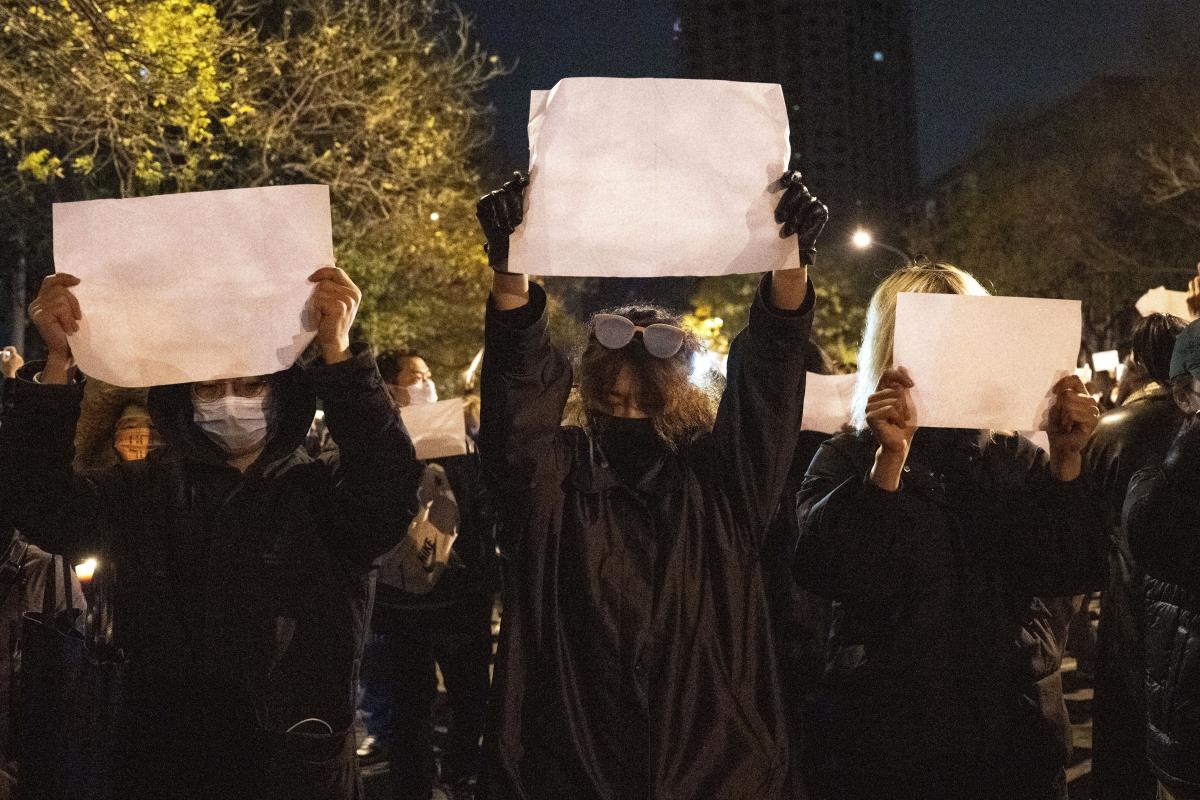A year ago, Li Houchen was on the streets of Shanghai, hollering “Freedom!” to protest China’s harsh “zero COVID” policy and growing authoritarianism.
He was one of thousands of people demonstrating across China in what came to be called the White Paper movement, after the blank sheets of paper protesters used to represent the country’s strict censorship controls.
Yet one year later, China has all but forgotten the protests. The state reacted quickly, breaking up the marches with arrests and threats and abruptly lifting COVID-19 controls.
The protests were a brief flare of defiance, the most direct challenge to the Communist Party’s authority in decades. For the young people who took part, it was their first protest. Now, many of them are pondering what’s next.
Today, Li lives in Tokyo, fulfilling a vow to himself to leave his homeland and go into exile to document the tumultuous events in China last year. He’s written a 448-page book, “Records of the Plague Year: From The Shanghai Lockdown to the White Paper Revolution,” hoping to fill in the blanks of state censorship.
“People in China easily forget,” Li said. “In China, you’re not allowed to remember.”
But after hard-line leader Xi Jinping came to power in 2012, things changed, Li said. Lawyers and intellectuals were arrested, critical voices silenced, and the internet, once free, filled with nationalist propaganda instead.
Xi’s crackdown “was a betrayal” for liberals like him, Li said. Xi broke the unspoken compact many thought the government had with its people — that it would bring prosperity and openness, as long as they didn’t touch politics.
When the coronavirus began sweeping the world, Xi’s tough new approach to governance won support among many in China. For two years, measures like mandatory testing and mass quarantines succeeded in keeping the virus at bay even as it ravaged other countries.
But last year, the virus grew milder but more infectious, making it less dangerous but tough to keep under control. Beijing stuck stubbornly to its zero-COVID controls, resorting to draconian lockdowns to keep the virus from spreading.
A turning point came when the virus spread in Shanghai and the government put the city under lockdown. For two months, residents were trapped in their homes. Some went hungry, while others were grabbed by police and forced into centralized quarantine centers with thousands of others.
Shanghai was just one of many cities put under brutal lockdowns. But as the most developed and cosmopolitan city in China, its suffering came as an intense shock to its residents, drawing global attention.
It set the stage for the White Paper protests, which started with a deadly apartment fire in Urumq i in China’s northwest Xinjiang region. Many questioned whether those who burned to death couldn’t escape because they were locked in their homes — one of the tactics authorities used to stem the spread of the virus.
Anger flared. United in their frustration with COVID-19 controls, people hit the streets of Urumqi, and students across the country held memorials to mourn the fire’s 10 or more victims.
As hundreds crowded one memorial in Shanghai, mourners tussled with police. Then some shouted slogans, escalating until the crowd began chanting: “Xi Jinping! Step down! CCP! Step down!”
Videos of the protest spread online, electrifying those unhappy with the state’s control. The next day, thousands gathered in Shanghai and over a dozen other cities across China, holding up sheets of paper, shouting slogans and jostling with officers.

